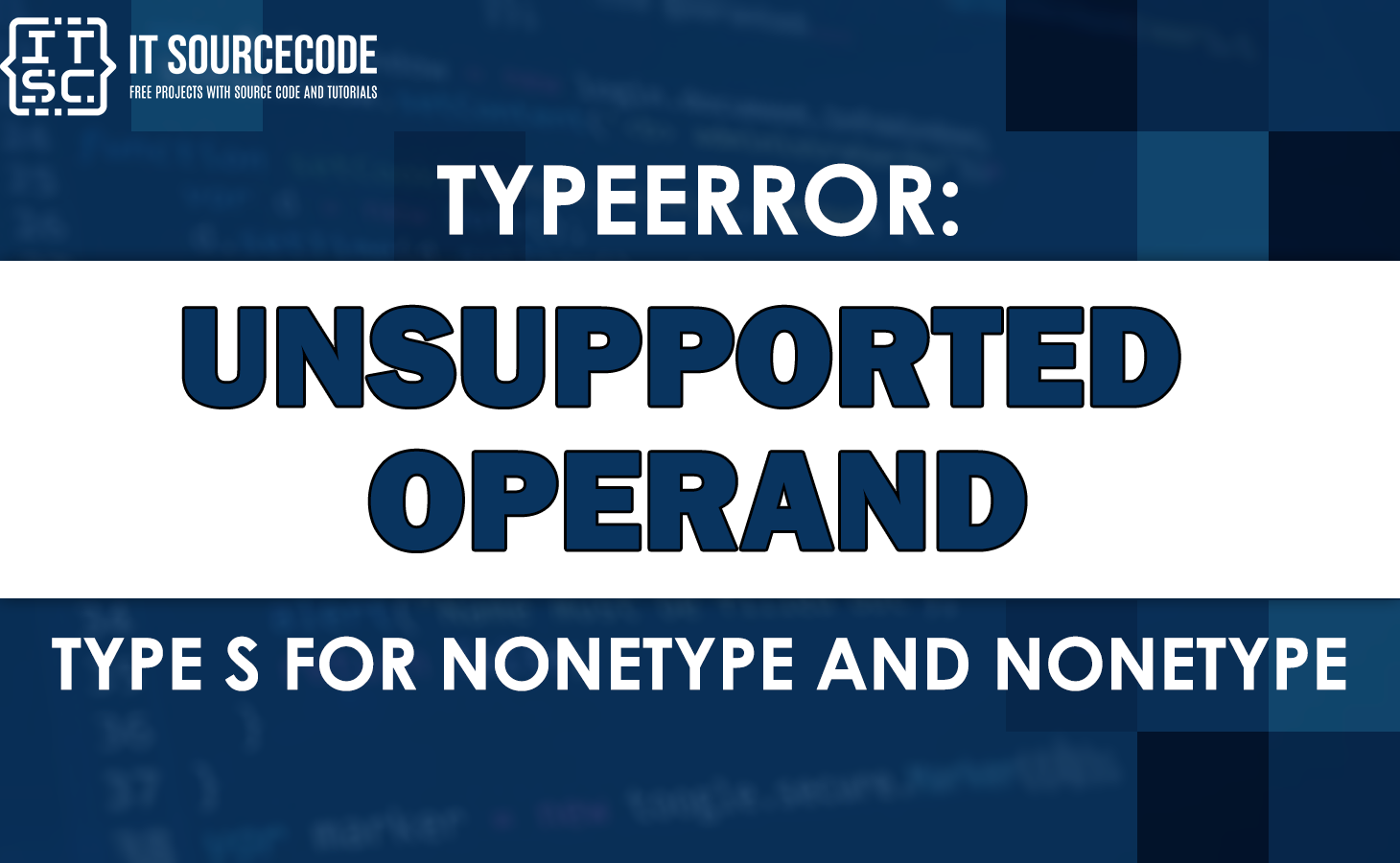Are you stuck with this “typeerror: unsupported operand type s for nonetype and nonetype” error message?
Well, you’re lucky enough, because in this article we are going to explore this type error.
We will explain thoroughly what this error means and why it occurs.
Apart from that, we’ll hand you the effective solutions that will help you resolve this “unsupported operand type s for nonetype and nonetype” type error.
What is “typeerror unsupported operand type s for nonetype and nonetype”?
The “typeerror unsupported operand type s for nonetype and nonetype” is an error message that occurs when you are trying to perform an operation between two NoneType objects.
Or you are trying to perform an operation between two incompatible data types.
In addition to that, this error usually occurs when operations are performed on incompatible types or NoneType objects.
For example:
sample1 = None
sample2 = None
result = sample1 + sample2
print(result)
As a result, it will throw an error message:
TypeError: unsupported operand type(s) for +: 'NoneType' and 'NoneType'It will result in a typeerror, mainly because NoneType is not a numerical value and cannot be added together.
Why does this error occur?
The following are several reasons why this error appears in your code:
→ If the variable is not assigned a value before being used in an operation.
→ If the function returns None instead of a numerical value.
→ If the value is explicitly set to None.
What is “NoneType” in Python?
“NoneType” is the type of the None object which represents a lack of value or a null value. It is an object that represents no value.
So, since it represents no value, definitely you can’t perform operations like addition or subtraction between two “NoneType” objects.
How to fix “typeerror unsupported operand type s for nonetype and nonetype”?
The following are the different solutions you may use to fix this error:
Solution 1: Use if statement to check nonetype objects before performing the operation
As you have seen in this solution, we check whether both sample1 and sample2 are NoneType objects before performing the operation.
If either x or y is NoneType, the code will skip the operation and set the result to None.
sample1 = None
sample2 = None
if sample1 is not None and sample2 is not None:
result = sample1 + sample2
else:
result = None
print(result)
Output:
NoneSolution 2: Assign value to the variable
You need to assign a value to the variable before using it in an operation.
When a variable is not assigned a value before being used in an operation, it will have a default value of None.
Ensure that you have already assigned a value to the variable before using it in an operation.
sample1 = 100
sample2 = 200
result = sample1 + sample2
print(result)Output:
300Solution 3: Use a default value
You can also use a default value for the variable if it is “None.”
In this example code, we use “0” as the default value.
sample1 = None
sample2 = 100
result = (sample1 if sample1 is not None else 0) + (sample2 if sample2 is not None else 0)
print(result)Output:
100Solution 4: Convert the variable
Here we convert the variable to a different data type before performing the operation.
As you can see in the example code below, we convert the variables to integers using the int() function.
sample1 = 1000
sample2 = None
result = int(sample1 or 0) + int(sample2 or 0)
print(result)Output:
1000Solution 5: Use isinstance() function
Alternatively, you can also use the isinstance() function to check if x and y are NoneType objects.
If they are, they are assigned a default value of 0 before performing the operation.
This approach is more explicit than checking for None using the if “sample1” is None syntax, which can lead to unexpected behavior in certain cases.
sample1 = None
sample2 = 10
if isinstance(sample1, type(None)):
sample1 = 0
if isinstance(sample2, type(None)):
sample2 = 0
result = sample1 + sample2
print(result)Output:
10Conclusion
In conclusion, the “typeerror unsupported operand type s for nonetype and nonetype” is an error message in Python.
That occurs when you are trying to perform an operation between two NoneType objects.
You are lucky enough because this article provides effective solutions. So that you can fix the “unsupported operand type s for str and float” error message.
We are hoping that this article provided you with sufficient solutions to get rid of the error.
You could also check out other “typeerror” articles that may help you in the future if you encounter them.
- Typeerror unsupported operand type s for str and float
- Typeerror: ‘dict_keys’ object is not subscriptable
- Typeerror: object of type ndarray is not json serializable
Thank you very much for reading to the end of this article.

